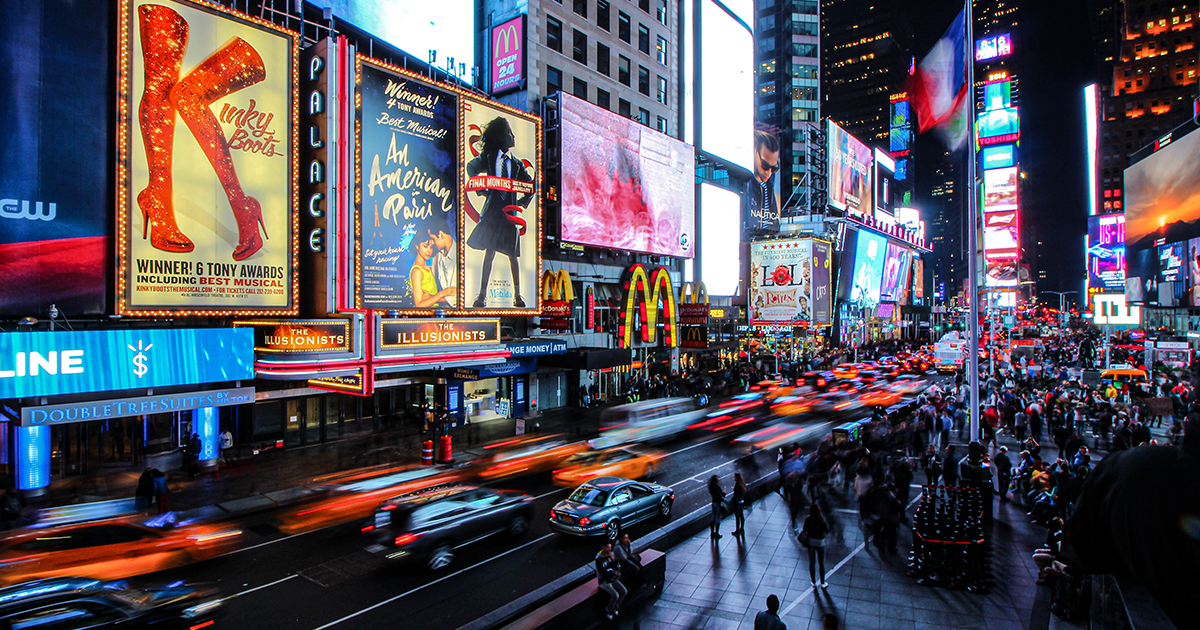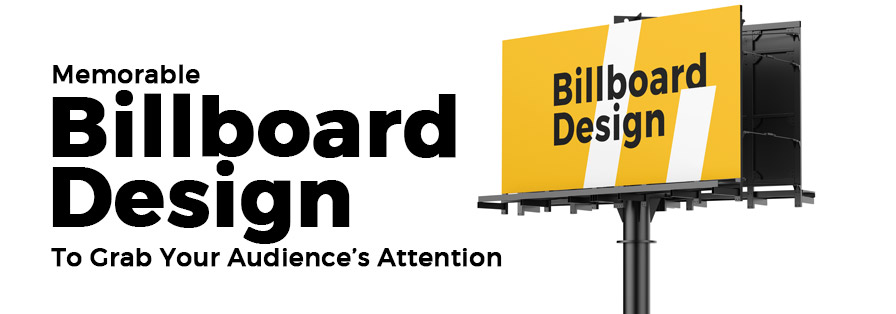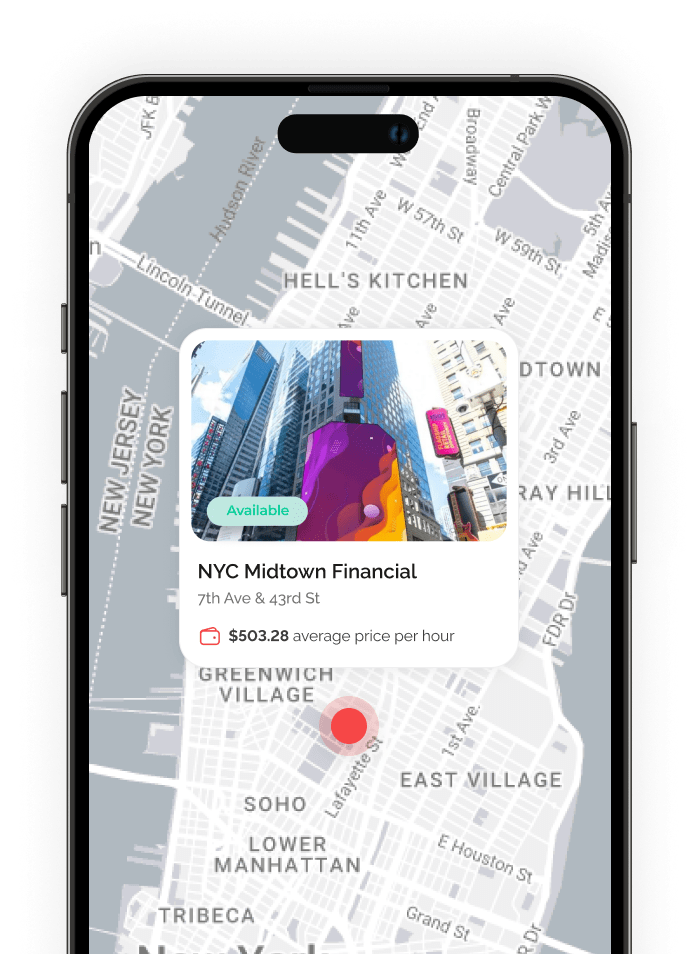Billboard best practices

Introduction to Billboard Best Practices
As you walk through the brilliant lights of Times Square, every glowing advertisement you see towers over the bustling crowd. Yet, these ads are more than mere marketing efforts. They’re an intricate dance of strategy, art, and technology. These are the billboards that follow the golden rulebook – billboard best practices.
Importance of following best practices in billboard advertising
Each billboard in this urban jungle serves a purpose beyond advertising. It’s an impressive beacon of brand communication that silently speaks to each passerby, instilling a sense of curiosity and brand recognition. The journey of billboards from static hoardings to interactive, digital screens has been revolutionary, marking a new era in outdoor advertising.
Overview of the impact of effective billboards on audience engagement
The leap from paint and print to digital pixels has transformed the humble billboard into a dynamic platform that sparks engagement and interaction, anytime, day or night. Digital billboard best practices have redefined audience engagement, allowing billboards to communicate in real-time, directly influencing the way consumers connect with brands.
Understanding the role of best practices in maximizing ROI
Billboards are superheroes of the advertising world. They have the power to command attention and influence consumer behavior, all while battling the elements. But as with any superhero, their power must be harnessed effectively to yield results. Implementing billboard ad best practices helps to maximize return on investment (ROI), optimizing every element of a billboard campaign, from design and placement to maintenance and compliance.
Location and Visibility
In the world of outdoor advertising, the phrase “location is everything” takes on a whole new meaning. It’s not just about securing a spot on the busiest street but about finding that perfect blend of traffic, visibility, and audience demographics.
Choosing strategic locations for maximum exposure
Finding the ideal location for your billboard can be like finding a needle in a haystack. It’s more than just visibility; it’s about strategic placement. High-traffic areas are prime real estate for billboard placements. These areas can offer exposure to a larger number of potential consumers. Remember, digital billboard best practices always emphasize strategic placement to maximize exposure.
Considering traffic patterns and audience demographics
Billboards thrive in high-traffic locations. These advertising giants use the power of traffic jams to their advantage by having a captive audience with nowhere to go. However, it’s not just about quantity but quality. Billboard advertising best practices underscore the need to consider the demographic profile of the people who frequent the billboard’s location to ensure your message reaches the right audience.
Ensuring optimal visibility from all angles and distances
Billboards are designed to be seen, but sometimes, that’s easier said than done. Factors like distance, viewing angle, obstructions, and even speed of traffic can affect billboard visibility. To ensure maximum readability and impact, best practices for digital billboard artwork include designing for large formats, using bold, clear visuals, and creating a straightforward message that can be read and understood quickly.
Billboard Imagery and Graphics
Billboards are the canvases of the advertising world. They provide a unique platform for showcasing your brand’s creativity and messaging. The use of compelling imagery and graphics can turn a regular billboard into a sky-high work of art.
Selecting high-quality images that resonate with the target audience
Selecting the right images for your billboard isn’t just about aesthetics. It’s about resonance. High-quality images that resonate with your target audience can generate emotional connections, influencing brand perceptions and driving action. Implementing these digital billboard advertising best practices can lead to more engaging and effective billboard ads.
Using visuals that support the message and evoke emotions
Graphics on a billboard do more than catch the eye; they tell a story. Whether it’s a simple logo or a complex illustration, every graphic element on your billboard contributes to the overall narrative of your ad. By following best practices in billboard design, you can create a compelling visual story that captivates and connects with your audience.
Scaling images appropriately for optimal visibility
When it comes to best practices billboard readability, size really does matter—but it’s all about getting it ‘just right.’ Images that are too big can overwhelm the viewer, while those that are too small may go unnoticed. Billboard best practices advertising suggests scaling images appropriately to maintain optimal visibility and impact.
Branding and Consistency
Consistent branding can significantly enhance your billboard’s impact. When your billboards reflect your brand’s personality, aesthetics, and messaging accurately, they become more than just standalone ads—they turn into integral elements of your overarching brand story.
Incorporating brand elements consistently across billboards
Incorporating consistent brand elements across all billboards ensures that each ad is instantly recognizable as part of your brand. Whether it’s your logo, color scheme, or typography, maintaining brand consistency in your billboard design is a critical part of billboard advertising best practices.
Aligning the billboard design with the overall brand identity
The design of your billboard should align seamlessly with your overall brand identity. This goes beyond merely slapping your logo onto the billboard. It’s about creating a design that breathes your brand, reflecting its values, aesthetics, and voice in every element. This alignment is one of the best practices for digital billboard artwork that aids in boosting brand recognition and recall.
Ensuring continuity in messaging and visual style
Creating continuity in messaging and visual style across all your billboards helps reinforce your brand in the minds of your audience. It’s about ensuring that each billboard, while unique in its content, forms a harmonious symphony with your other ads, creating a cohesive brand experience that resonates with your audience.
Timing and Frequency
In billboard advertising, timing can make the difference between an ad that fades into the background and one that captivates the audience. Strategically timing your billboard campaigns can significantly enhance their impact and effectiveness.
Considering the optimal duration for billboard campaigns
There’s an art to determining the optimal duration for your billboard campaigns. Display an ad for too long, and it may lose its novelty. Remove it too soon, and you might miss out on potential impressions. By adhering to billboard best practices advertising, you can identify the perfect duration for your campaigns that ensures maximum exposure without causing ad fatigue.
Rotating and refreshing creative content regularly
Keeping your billboard content fresh and engaging is key to maintaining audience interest. Regularly rotating and refreshing your creative content can give your audience something new to look forward to, driving curiosity and anticipation. This rotation is one of the digital billboard advertising best practices that can help maintain your brand’s relevance and top-of-mind recall.
Aligning the timing of billboard ads with marketing campaigns
To maximize their impact, your billboard ads should align with your broader marketing campaigns. This synchronization ensures that your audience receives consistent messages across various touchpoints, creating a seamless and holistic customer journey.
Understanding size and placement guidelines
Billboard size and placement guidelines dictate where and how large your billboards can be. Following these guidelines not only keeps your billboard campaigns compliant but also ensures that your ads are optimally positioned for maximum visibility and impact.Ï








